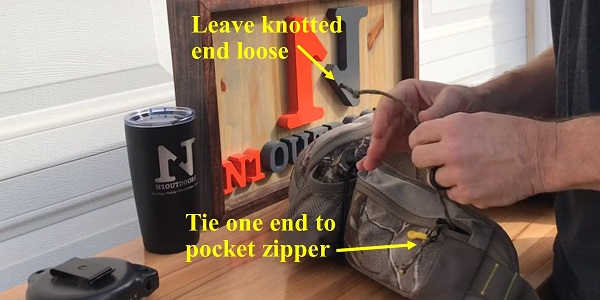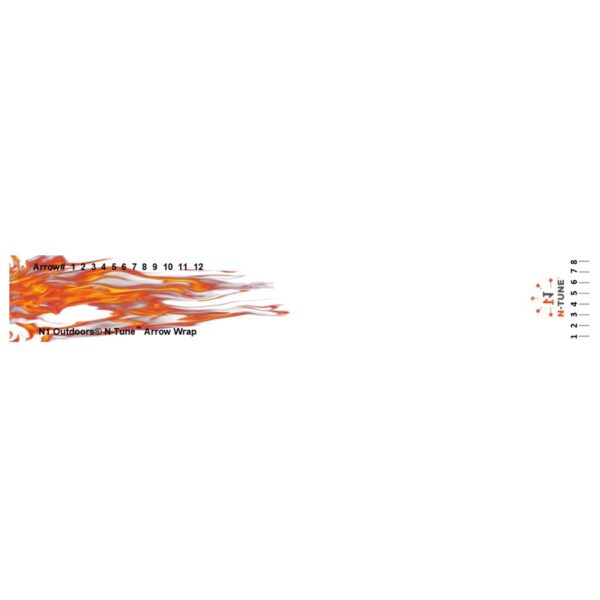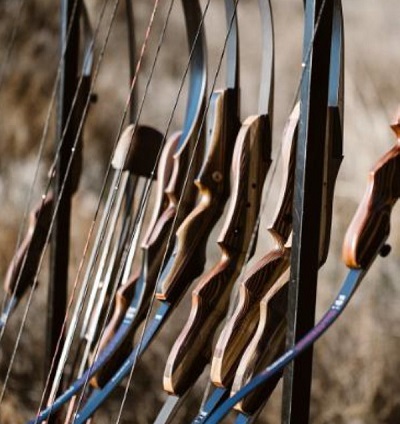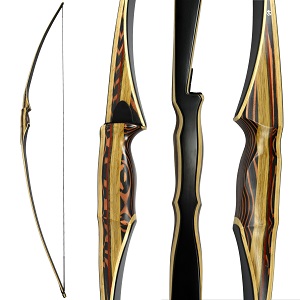There are a lot of deer sounds and noises I like to hear in the woods. But, there’s one I usually don’t like to hear, especially when I’m walking to my hunting stand. More on that below…
This is the story of some deer sounds that led to a dandy South Carolina archery buck…
It’s unforgettable moments like this one that spurred us on to start the N1 Outdoors brand…
In this article, you’ll hear the following deer vocalizations:
- Deer blow (snort)
- Doe grunt
- Buck grunt
- Doe bleat
- Estrous doe bleat
- Tending buck grunt
- Buck bawl
- Enraged buck
- Sparring bucks
Note: If you are interested in learning what sounds a deer makes, you can listen to the above deer sounds throughout the article as well as at the bottom of the page.
A New Deer Hunting Property
The 2010 deer season in South Carolina held some great memories for me.
I had been granted permission to hunt some new property that was only 3 miles from my house!
The catch?
It was bow only property. No guns allowed.
The South Carolina archery only season was already over and we were getting some consistent colder weather.
But, the truth is, I really wasn’t disappointed to be hunting with my bow during gun season, because deer hunting just makes me want to say “Bowhunt Oh Yeah!” In fact, I hadn’t even hunted with my rifle since 2009.
-

N1 Outdoors® Fishscape™ Outdoor Tee
Price range: $28.99 through $32.99 Select options This product has multiple variants. The options may be chosen on the product page -
Sale!

N1 Outdoors® Western Hunter TriBlock™ Tee
Original price was: $22.99.$5.00Current price is: $5.00. Select options This product has multiple variants. The options may be chosen on the product page -
Sale!
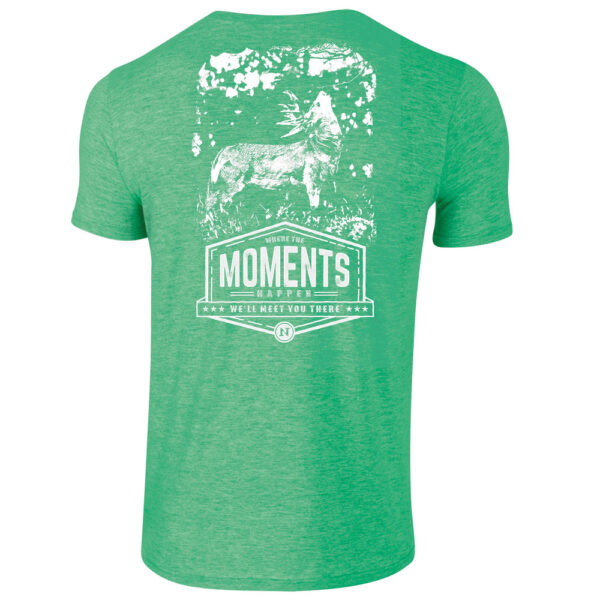
N1 Outdoors® N1 Moments™ Licking Branch Buck SS Tee
$5.00 Select options This product has multiple variants. The options may be chosen on the product page
Deer, sound the alarm!
It was a chilly, November 18 morning, and the rut was in full swing. I had seen a fair amount of rutting activity, but had not seen any bucks that got me very excited. But, when you love to bowhunt, it’s a great time to be in the woods.
I had parked my truck and was making the walk to my stand on the downwind side of where I would be hunting.
My stand location was in a head of hardwoods that contained several white oaks. I’ve always loved hunting locations that contain white oaks, especially in early fall, as the acorns are falling. But although the deer love them, by now, there weren’t any left for them to enjoy.
Nonetheless, it was a good location on the edge of a fairly large clear cut that the deer would typically transition through on their way to the other side of the property.
There was a gate opening that I needed to walk through to enter the woods where my stand location was.
The Deer “blow” or “snort” Sound
I had gotten about three steps through the gate, when the head of woods I was about to enter exploded with the sounds of deer blowing. It was still too dark to see, but it sounded like a small army of whitetail had just left the building. I stopped and listened, as the sounds of their escape got farther and farther away.
PRESS PLAY ABOVE TO HEAR WHAT A DEER BLOW / SNORT SOUNDS LIKE… Deer will blow (or snort) to alert other deer of danger. Deer often blow as a result of seeing or smelling something perceived as dangerous. Sometimes deer will blow and stomp to try and get a predator (or person) that they believe is in the area to move and thus reveal their location. (This is not to be confused with a “snort wheeze” sound that a buck makes). It’s important to be as scent-free as possible and pay attention to wind direction when hunting, so you can avoid a blow/snort that ruins your hunt! MORE DEER SOUNDS FURTHER DOWN PAGE!
I was pretty disappointed to say the least.
I had taken such great care in paying attention to wind direction when walking to my stand. Yet, here I was, not even in my stand yet, and the deer already knew where I was.
It was like the deer were leaving the area in slow motion.
I was already wondering what I could have done differently.
Regroup
Well, there I was (and they knew it). I had that sick feeling that might have made one want to just go back to the truck. But, this was the rut, and I love to hunt whether the deer blow me up or not!
I found my way to my tree and got in my stand, pulled up my bow, and got settled. By now, it was first light but the sun was not yet up.
The whitetail doe grunt
After sitting for 10 minutes or so, I thought it might be a good idea to give my grunt call a soft doe grunt. My thinking was, “maybe if they hear this, they’ll think things have settled down and are safe again.”
So, I blew on my grunt call softly, making a “social grunt” noise.
PRESS PLAY ABOVE TO HEAR WHAT A DOE GRUNT SOUNDS LIKE… Does use this sound as a “social grunt” as a way of communicating with each other. It can be a useful call when hunting to attract does closer to your stand or hunting location. MORE DEER SOUNDS FURTHER DOWN PAGE!
A fast appearance
It had probably been only 10 seconds after grunting, that I could see a deer appear about 100 yards away, on the field edge. Even at that distance, I could see his horns and I was interested!
No sooner than he appeared, he began running toward the head of woods I was in. He got to a well traveled path at the edge of the hardwoods and slowed down, turned, and began walking toward me.
By now my heart is racing pretty good, because I can see this deer is a shooter, and I have gone from heartbroken to hopeful in a matter of minutes.
This is where I have to say that the buck walking toward me had one of the better set of antlers I had seen in my area of South Carolina.
In recent years, SCDNR bag limits had been high. Many believe that these high limits, coupled with poor deer management, had resulted in fewer mature bucks in South Carolina.
All I knew was, the age and size of the deer walking toward me was not commonplace in my area.
I had my bow in my hand, but didn’t feel I was going to be able to stand up without messing something up. My archery stance on this deer was going to be… sitting down. I sat and watched him inch closer.
Prior to getting in the tree stand, I had put some estrous scent on a tree limb about 20 yards away. He walked right past it. But, the worst part was that in about 3 more steps, I knew he would be downwind of me, and be gone!
-
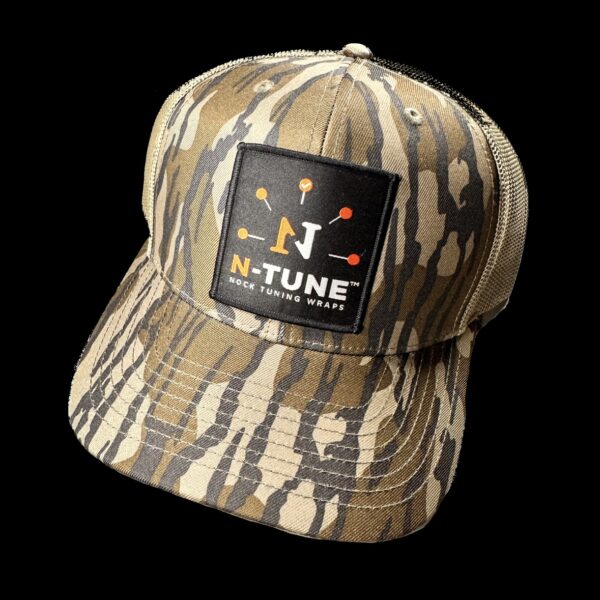
N1 Outdoors® N-Tune™ Patch Trucker Hat (Mossy Oak Bottomland Camo)
$26.99 Select options This product has multiple variants. The options may be chosen on the product page -

N1 Outdoors® RodTogs™ Patch Trucker Hat (Mossy Oak Elements Bonefish & Light Grey)
$26.99 Select options This product has multiple variants. The options may be chosen on the product page -

Multicam Camo N1 Logo Leather Patch Hat
$26.99 Select options This product has multiple variants. The options may be chosen on the product page
Come on daylight!
I couldn’t believe I was about to watch the biggest South Carolina buck I had encountered leave my life. But, unfortunately, it was all but over.
Just as I thought this hunt was coming to an end (for the second time in minutes), he stopped, turned around, and walked back to the tree limb where I had put the estrous scent.
I knew this was my chance. So, I quietly went to full draw. I thought, “ok, aim small, miss small.” But, there was just one, really big, problem. I looked through my peep and saw, well nothing. It was still too dark in that head of woods to clearly see the buck.
If this buck would stay for a few minutes, there would be enough light through the trees to see his vitals clearly. But, I knew with chasing does on his mind, he probably wasn’t staying much longer. And, I knew that in that particular location, the wind had a tendency to swirl from time to time.
The prayer, the draw, the release
I can’t remember everything that was racing through my mind at that point, but I know I probably prayed a few fast words. It’s amazing how fast I can get to a prayerful state of mind when a big buck is nearby (amazing and shameful!)
As I was still at full draw, I moved my eye outside of my peep, so that I could see the buck through my site pins.
Then, I slowly looked back through the peep and could see the target… barely.
I released my arrow and he gave the ‘ole donkey kick. He bolted down the draw and out of sight. I sat for two hours, wondering how this whole story was going to end.
The wait and the search
So far that morning, I had heard deer blow and deer run… now, all I wanted to hear was, “wow, that’s a nice buck there in the back of your truck!”
During those two hours, I scanned the ground endlessly, hoping to see a bloody arrow. I saw nothing. Of course, then the doubts set in… “did I make a good shot? How far did he go? Will I ever find him?” It was agonizing.
Finally, I decided to get down and go look. I walked out 20 yards to where I had shot him and I saw my arrow lying on the ground, the arrow shaft and my broadhead half-covered by the forest floor.
My arrow had been Just Pass’N Through!
I picked it up and immediately got some encouragement… bright pink, frothy blood on my fletches. Things were looking up!
I followed along the faint blood trail. It wasn’t significant, but it was enough to keep me moving to the next spots of blood.
After 150 yards or so, I reached a small creek that ran through the property. I was till intently focused on the ground near my feet, checking for any small clue I could find. The blood trail had stopped.
I looked up and about 30 yards away, in the creek, was the buck. I held both hands high and thanked the Lord for answering my desperate (yet somewhat shallow) prayer.
The shot turned out to be a double-lung pass through. (We love pass throughs so much, we even made a shirt about them!)

The morning started with deer blowing up the woods… but it ended with a solid buck down.
The drag
I was by myself with no one to help me drag this deer out. I could either drag him about 200 yards uphill, or try to drag him through the muddy, swampy mess of a creek. So, I chose option 2.
I was able to use the shallow creek as assistance and slide the buck through the area for the long 300 yard trek back to the truck.
A short drive and a few pictures later, I had officially sealed the deal on one of my most memorable N1 Moments.
Deer sounds: The key to this N1 Moment
Looking back, I’m glad for the deer noises I heard that day… the deer blowing, the deer running, and finally, the deer sliding through the creek bed on it’s way to my freezer and my wall.
LISTEN BELOW FOR MORE DOE AND BUCK NOISES…
Buck Grunt Sound
PRESS PLAY ABOVE TO HEAR WHAT A BUCK GRUNT SOUNDS LIKE. Much like a doe grunt, the buck grunt is a noise a buck makes to communicate socially with other bucks in the herd. It can be a useful call for a hunter to get a buck’s attention as an attempt to lure him closer into shooting range.
#ad
Doe Bleat Sound
PRESS PLAY ABOVE TO HEAR WHAT A DOE BLEAT SOUNDS LIKE. Does use bleats to communicate with each other, especially in the presence of their fawns. Fawns will also bleat when in danger, which will often attract adult deer to come looking for the fawn in distress. The bleat is a good deer noise to have in your calling arsenal when hunting, as it can draw does toward your stand location, which can also lure bucks in search of does, especially during the rut.
Estrus Doe Bleat Sound
PRESS PLAY ABOVE TO HEAR WHAT AN ESTRUS DOE BLEAT SOUNDS LIKE. Does will give estrus bleats to indicate to bucks in the area that they are ready to breed. This is a good deer sound to use when calling during the rut.
Buck Trailing Grunt Sound (Tending Grunt)
PRESS PLAY ABOVE TO HEAR WHAT A TRAILING BUCK GRUNT SOUNDS LIKE. Bucks will use this call when following an estrus doe. This grunt is in short bursts and sometimes is in cadence with each step the buck takes.
Buck Bawl Sound
PRESS PLAY ABOVE TO HEAR WHAT A BUCK BAWL SOUNDS LIKE. Bucks get lonely too! Bucks will make this sound to signal other deer for company.
Enraged Buck Sound
PRESS PLAY ABOVE TO HEAR WHAT A BUCK RAGE GRUNT SOUNDS LIKE. Bucks will make this noise when a doe they want to breed will not cooperate.
Sparring Bucks Sound
PRESS PLAY ABOVE TO HEAR THE SOUND OF BUCKS SPARRING AND GRUNTING. Bucks will clash antlers to establish dominance for breeding rights.
-

N1 Outdoors® N-Tune™ Nock Tuning Reflective Arrow Wraps – Bowhunt Oh Yeah™
Price range: $18.99 through $27.99 Select options This product has multiple variants. The options may be chosen on the product page -

N1 Outdoors® N-Tune™ Nock Tuning Reflective Arrow Wraps – Purple Diamonds™
Price range: $18.99 through $27.99 Select options This product has multiple variants. The options may be chosen on the product page -

N1 Outdoors® N-Tune™ Nock Tuning Reflective Arrow Wraps – Heart Stopper™
Price range: $18.99 through $27.99 Select options This product has multiple variants. The options may be chosen on the product page
Shop for N1 Bowhunting T-shirts


























